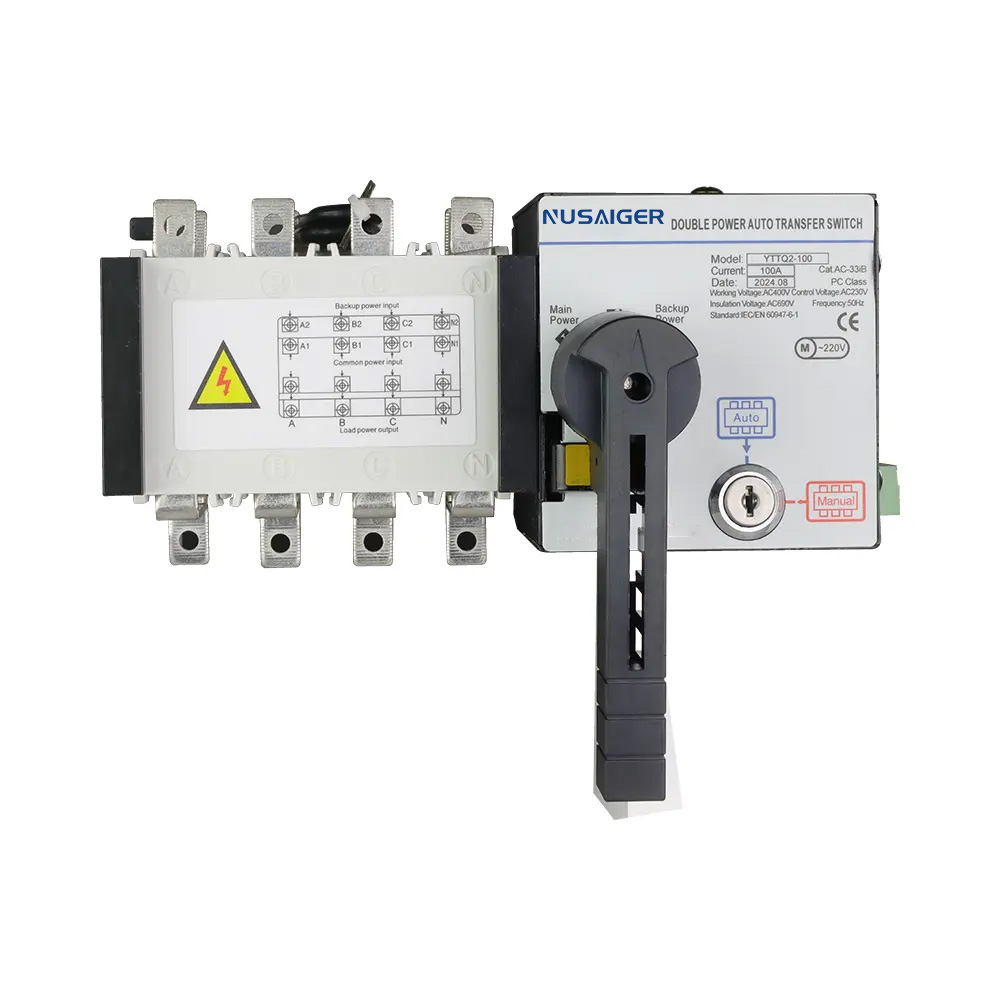Troubleshooting Dual Power Automatic Transfer Switches: Common Failures and Solutions
Dual power automatic transfer switches (ATS) are critical for ensuring uninterrupted power supply in hospitals, data centers, industrial facilities, and commercial buildings. However, like all electrical devices, ATS systems can experience faults or failures if not properly maintained or if underlying issues occur. This article provides a detailed guide to troubleshooting common ATS problems and implementing effective solutions.
1. No Transfer to Backup Power
Problem: During a main power outage, the ATS does not switch to the backup source.
Possible Causes:
- Backup generator not started or disconnected
- ATS control failure or malfunction
- Voltage sensing circuit failure
- Incorrect wiring or loose connections
Solutions:
- Verify generator operation and connections.
- Check ATS controller for faults or error codes.
- Inspect voltage sensing circuitry and replace faulty components.
- Tighten or correct any wiring issues according to the manufacturer’s diagram.
2. Delay in Switching Between Sources
Problem: ATS switches with a significant delay, causing power interruption.
Possible Causes:
- Slow generator startup time
- Incorrect transfer delay settings in the controller
- Worn or corroded mechanical contacts
Solutions:
- Adjust controller settings to match required delay times.
- Maintain or replace generator to ensure rapid startup.
- Inspect and clean contacts; replace if severely worn or corroded.
3. ATS Fails to Transfer Back to Main Power
Problem: After the main power is restored, the load remains on the backup source.
Possible Causes:
- ATS controller incorrectly configured for return-to-normal operation
- Main supply voltage not stabilized
- Mechanical sticking of contacts
Solutions:
- Verify and reconfigure controller settings for automatic return.
- Monitor main supply voltage and ensure it meets stability requirements.
- Clean or replace mechanical contacts if sticking occurs.
4. Frequent or Unnecessary Switching
Problem: ATS switches back and forth between main and backup sources unnecessarily.
Possible Causes:
- Voltage fluctuations on the main supply
- Improper transfer sensitivity settings
- Faulty sensors or control circuits
Solutions:
- Install voltage stabilizers if fluctuations are significant.
- Adjust ATS transfer sensitivity to avoid rapid switching.
- Test and replace defective sensors or controller components.
5. Mechanical Contact Issues
Problem: Arcing, overheating, or failure of contacts during switching.
Possible Causes:
- High inrush current or overload conditions
- Wear and tear due to frequent switching
- Corrosion or dirt on contact surfaces
Solutions:
- Check load to ensure it does not exceed ATS ratings.
- Inspect contacts periodically and replace when worn.
- Clean and maintain contact surfaces to prevent arcing.
6. Controller Malfunctions
Problem: ATS controller does not respond or displays errors.
Possible Causes:
- Firmware or software issues
- Power supply interruptions to the controller
- Faulty sensors or input signals
Solutions:
- Restart or reset the controller following the manufacturer’s procedure.
- Ensure stable power supply to the controller.
- Check all input signals and replace defective sensors.
7. Preventive Measures for Reliable ATS Operation
- Schedule regular inspection and maintenance of ATS and generator systems.
- Test transfer operation under load conditions periodically.
- Keep ATS and surroundings clean and dry to prevent corrosion.
- Document and monitor operational events to detect patterns of failure.
- Train personnel to recognize early warning signs and respond appropriately.
8. Conclusion
Effective troubleshooting of dual power automatic transfer switches ensures that critical loads remain protected and power interruptions are minimized. Understanding common failures, identifying their root causes, and implementing proper solutions can significantly improve ATS reliability and lifespan. Preventive maintenance and adherence to best practices are key to ensuring continuous and safe operation of electrical systems.



